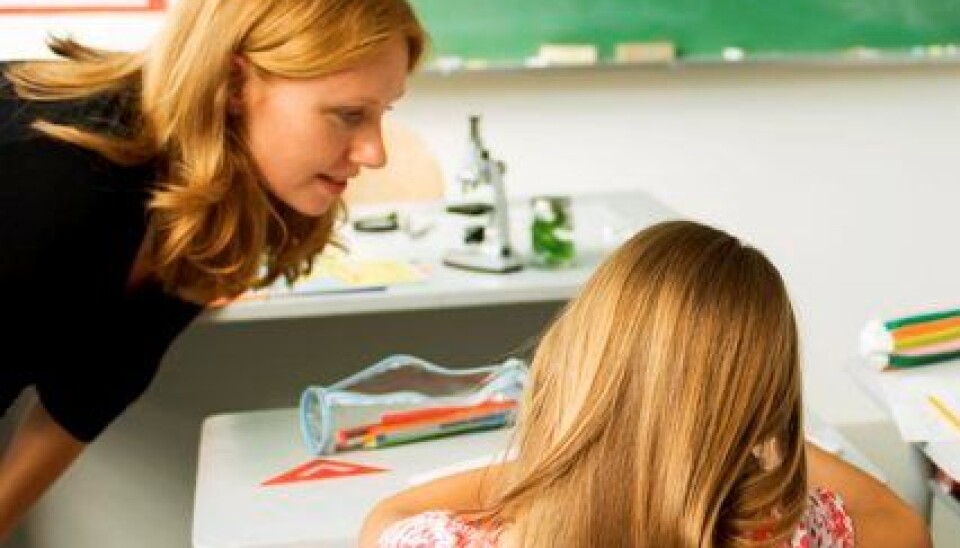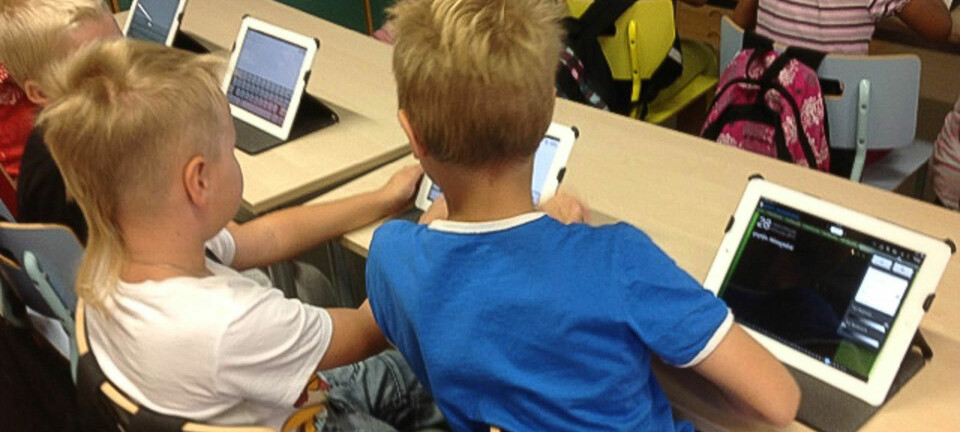
Flipped classrooms don’t need to flop
New technology will forge ahead in classrooms whether we like it or not, according to experts. This poses a challenge for educators who prefer traditional techniques.
Denne artikkelen er over ti år gammel og kan inneholde utdatert informasjon.
The Norwegian Centre for ICT in Education issued a report last week presenting its visions for ICT use in the nation’s schools. The Centre joined forces with Norwegian researchers as well as the New Media Consortium in the USA in their evaluation of new trends and challenges expected to impact schools in the next few years.
The experts identified several important trends that teachers and administrators need to address.
Allow kids to use their own digital devices
Smartphones and other digital devices have become major elements of daily life among children and teens. Vibeke Kløvstad, head of communications at the Centre, thinks schools need to face this fact in a constructive way.
“Everyone has a smartphone in their pocket and it can certainly be used for learning,” she says.

Norway is in the vanguard when it comes to per capita ownership of PCs, smartphones, tablets and other digital devices.
“This is rather unique to Norway, where pupils tend to have quite a lot of technology at home,” she says.
But it’s an exaggeration to say all kids have smartphones and live in homes loaded with computers and high-speed Internet connections. Educators need to take measures to compensate for students who are less wealthy and wired.
“We need to prevent digital class barriers and make agreements with suppliers so that everyone can buy what’s needed,” she says.
Nor can technology be given free rein in the classroom. The use of digital devices requires strong supervision, systematic approaches and goal-oriented efforts.
“We’ll probably have to avoid chaos by standardising use with a limited variety of units and package solutions. Teachers need to ask themselves: ‘What am I going to do in my classroom sessions with all these devices?’”
Web clouds and social media
The school system cannot really turn its back on the explosion of cloud services and social media.
“The use of cloud services has expanded to the point where nearly all organisations use them, whether or not it’s been a conscious policy,” the experts write in their report.
Kløvstad thinks this trend can be used beneficially in schools.
“A person can always use a tablet or a mobile phone as an isolated device without cooperating with others in any way. But that closes the door on a lot of opportunities.”
Cloud services make it possible to cooperate more flexibly. Pupils and teachers can share documents and work together from anywhere and at any time. A good example is the way that Nordahl Grieg High School in Bergen uses Google Docs.
“The students there write their papers in Google Docs and the teacher is more actively involved from the start and steers them in the right direction. That way they don’t end up with a long comment in red ink at the bottom,” she says. “That usually tends to be demotivating.”
The students thrived on this method of work and achieved good results. They worked harder with their writing when they were able to store their essays in a web cloud. Regular school work rarely attains a lasting value in this way, points out Kløvstad.
Flipped classrooms
The group of experts asserts that these trends can be successfully exploited if the technology is applied to an educational framework that embraces it rather than resists it – an approach where information and communications technology has a natural, supportive function.
“Flipped teaching is one of the educational consequences that we see the experts have stressed,” says Kløvstad.
Flipped learning is a pedagogical method in which the presentation of material is moved out of the classroom, for instance to online lectures at home, while what used to be homework is moved into the classroom.
“For example, kids can watch a three- or four-minute lecture, a video that they watch at home. Then the teacher can use more time in school actively helping the pupils.”
Expecting resistance
But Rome wasn’t built in a day. Kløvstad thinks many teachers will prefer to continue teaching in the way to which they are used.
“Many teachers feel secure writing on a board. When new technology challenges this situation the teacher will have to find a new kind of stability. Coping with this can be rather trying for many educators,” she says.
Instead of the teacher demonstrating his/her knowledge and ensuring that the students deliver, we have to switch to a model where the teacher delivers and the students demonstrate. The students get more responsibility and control. Kløvstad says this is a matter of using their knowledge rather than simply being questioned by the teacher.
---------------------
Read the Norwegian version of this article at forskning.no
Translated by: Glenn Ostling

































